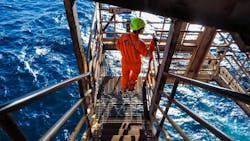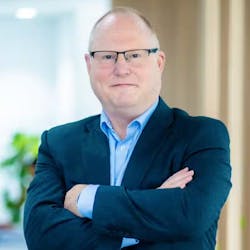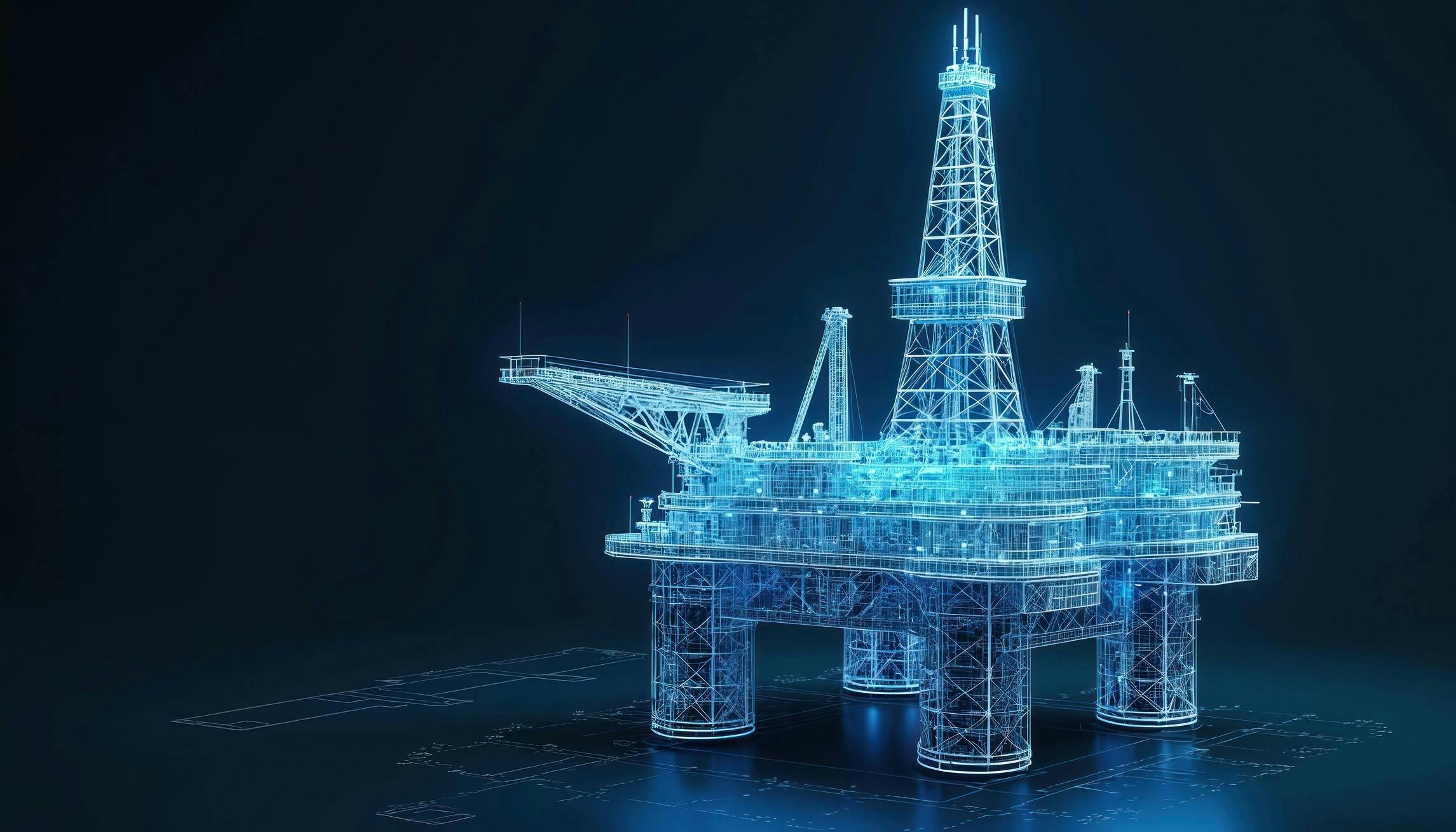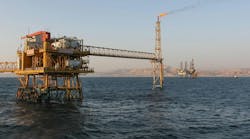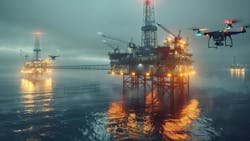ADIPEC 2025: Kent EVP on offshore Middle East trends in engineering, digital twins and sustainability
Key Highlights
- Early engagement with clients and structured decision frameworks help optimize project design, reducing redesigns and ensuring on-time delivery.
- Innovations such as remote monitoring, subsea tiebacks and electrification are transforming offshore operations to be leaner, safer and more sustainable.
- Integrating environmental considerations into every project ensures compliance and biodiversity protection through proactive design measures.
- Digitalization, including digital twins and predictive analytics, enables real-time asset monitoring, predictive maintenance and autonomous operations, boosting efficiency and safety.
By Ariana Hurtado, Editor-in-Chief
As offshore oil and gas activity intensifies across the Middle East, engineering teams face mounting pressure to deliver safe, efficient and scalable solutions in complex environments.
Ahead of ADIPEC 2025, Offshore spoke with Iain Eddie, EVP of EMEA & APAC at Kent Plc, to explore how modular design, supply chain discipline and data-driven strategies are helping operators navigate aging infrastructure, resource constraints and evolving regulatory demands. The conversation also highlighted lessons learned from recent offshore projects and technologies shaping the region’s energy future.
Offshore: What are the most pressing engineering challenges facing offshore oil and gas projects in the Middle East today, and how is Kent addressing them?
Eddie: The Gulf is running at full tilt. The first challenge is meeting capacity, by ensuring that we have the right people, in the right place, at the right time. The capacity is also reliant on ensuring that we still meet national objectives for local content and supplier development. The demand signal across the region is intense, which constrains specialist engineering resources and creates competition for experienced construction and commissioning talent. Kent has leaned into this with a blended model: we attract and grow capability locally through graduate and academy programs, while flexing global delivery from centers of excellence to keep quality high and costs predictable.
The second challenge is the supply chain. Long-lead equipment and congested vendor workshops can push critical items onto the path of delay. Our response is to get in early by locking production slots and expediting intelligently through trusted vendor relationships. This way, procurement becomes a schedule enabler, not a bottleneck. That discipline is backed by integrated project controls and vendor management teams who live and breathe expediting, inspection and logistics, minimizing surprises between factory floor and offshore hook-up.
The third is technical: aging, live assets that must keep producing while we upgrade them. Late-life integrity issues, obsolescence and SIMOPS make “brownfield on a live plant” one of the toughest assignments in engineering. Kent’s answer is a brownfield playbook built on right-sized engineering, modularization to reduce offshore hours, and a data-centric toolset that takes uncertainty off the table from plant capacity modeling and weight control to emissions and risk insights. This allows us to execute safely, faster and with fewer offshore interfaces.
Underpinning all of this is continuity from concept to execution. By connecting consultancy, front-end engineering design (FEED) and engineering, procurement and construction (EPC) teams as one, we retain front-end insight through to commissioning, cutting rework and preserving the original value case. It’s a simple idea with outsized impact in the Gulf’s pace-driven environment: fewer handovers, clearer accountability and delivery that is scalable, predictable and safe.
Offshore: Can you walk us through a recent offshore project in the region where your company delivered integrated solutions from concept to commissioning?
Eddie: One of our recent showcase projects is the Additional Power Generation Project at ADNOC’s Central Processing Complex, where Kent delivered a fully integrated EPC solution, which is a testament to our end-to-end project capability from concept through commissioning.
The project involved the EPC of a solar gas turbine generator (GTG) to enhance power reliability at an offshore facility. Our team has managed the entire lifecycle from detailed design and procurement of mechanical, electrical and control systems, through to full construction and commissioning support.
Despite complex offshore logistics and operational constraints, the project was completed ahead of schedule thanks to seamless collaboration across our engineering offices, fabrication partners and site teams. We completed all risk and lifting studies, fabricated key components early and delivered the GTG module to Abu Dhabi for timely offshore installation.
Offshore: What innovations in subsea engineering or topside design are helping offshore operators in the region reduce costs and improve operational efficiency?
Eddie: Innovation is the backbone of cost-efficient offshore operations, and in recent years, it has fundamentally reshaped how operators approach design and asset management.
At Kent, we’re leveraging advances such as remote monitoring and control, which allow traditionally 'attended' installations to be converted into normally unattended facilities, reducing both opex and safety risk. We’re also helping clients unlock value through re-use of existing infrastructure. For example, our operation is enabling subsea tiebacks to existing platforms through detailed capacity modeling and life-extension engineering.
Offshore electrification is another game changer, through cutting emissions and reducing maintenance associated with conventional power generation offshore. We’re also rethinking redundancy philosophy by improving the reliability of key equipment, enabling smaller and lighter topsides that are faster to fabricate and install.
Offshore: How does Kent collaborate with national oil companies (NOCs) and international partners to deliver complex offshore projects on time and within budget?
Eddie: Our philosophy is simple: success begins early. Kent engages with clients at the concept and pre-FEED stages, ensuring the project is optimized before major investments are made.
By developing and evaluating all potential options through a structured decision-quality framework, we give our clients confidence that the selected concept is the best one, reducing costly redesign later in the process. We benchmark our designs against industry best practice for cost and schedule, and we introduce innovative contracting models such as combined design phases or alliance structures to encourage collaboration and flexibility.
We also integrate procurement support for long-lead items from the outset, ensuring early production slot allocation and avoiding supply chain bottlenecks. And crucially, we involve commissioning and operations teams early, so the design inherently supports efficient construction, startup and long-term operation.
This front-end approach sets the foundation for predictable delivery and fosters the trust and transparency that our NOC and IOC partners have come to expect from Kent.
Offshore: How does Kent tailor its engineering and project management strategies to meet the unique environmental and regulatory conditions of the Middle East offshore market?
Eddie: Across the Middle East, and particularly in the Kingdom of Saudi Arabia, construction permits hinge on a rigorous environmental impact assessment. Kent always ensures these are completed and approved during the FEED phase.
Our engineers integrate all mitigation measures directly into the design, from rerouting pipelines around sensitive habitats to modeling outfall dispersion in the Gulf to meet ambient temperature standards. Every specification reflects our commitment to protecting biodiversity and ensuring compliance with local regulations.
Offshore: What role does digitalization, such as digital twins, advanced simulation or predictive analytics, play in optimizing offshore project delivery and asset performance?
Eddie: Digitalization is transforming how we design, deliver and operate offshore assets. At Kent, through our EnnovaAI platform, we’re aiming to push this transformation beyond visualization, but rather into prediction, automation and decision intelligence.
Our digital twin ecosystem enables real-time monitoring of offshore facilities, allowing engineers to visualize asset health and performance from anywhere in the world. AI-driven predictive analytics anticipate equipment failures and optimize maintenance schedules, reducing downtime and extending asset life.
We’re also bridging this capability into remote and autonomous operations, where assets can be managed with minimal offshore presence, enhancing safety and reducing carbon intensity. With AI-powered geofencing and intelligent situational awareness, EnnovaAI supports safe operations, optimizes logistics and provides autonomous decision support during critical tasks.
Digitalization, empowered by AI, IIoT and EnnovaAI, is enabling the shift from reactive to autonomous operations, redefining how offshore assets are designed, delivered and managed across their lifecycle.
Offshore: How does your company integrate sustainability and emissions reduction into its offshore engineering solutions, particularly in carbon-intensive regions like the Arabian Gulf?
Eddie: Decarbonization is no longer an afterthought in the industry; it’s embedded in every aspect of our work. Whether we’re designing new facilities or upgrading legacy assets, we integrate sustainability, emissions reduction and energy efficiency from the start.
For example, we’re working with ADNOC on a flare gas reduction roadmap and supporting operators across the region in developing electrification and renewable integration strategies for offshore facilities. Using our Carbon Intensity Reduction Tool, we can model emissions through the full lifecycle, helping clients make informed design decisions that align with net-zero ambitions.
In older assets, which are often the hardest to decarbonize, we apply creative engineering and retrofitting strategies to drive efficiency gains, helping to extend asset life while significantly reducing environmental impact.
Our approach combines engineering precision with climate responsibility, ensuring that sustainability is measurable and achievable.
Offshore: What are the key factors driving demand for modular and prefabricated offshore solutions in the Middle East, and how is Kent responding to this trend?
Eddie: The growing demand for modular and prefabricated solutions is driven by a central goal of reducing time spent offshore. By maximizing onshore fabrication, operators can improve safety, accelerate delivery and achieve greater cost control.
Kent is responding with a modular-first philosophy, applying lessons from decades of global experience. By designing and fabricating modules onshore, we minimize offshore exposure, improve quality, and deliver projects faster and more predictably.
This approach aligns perfectly with the region’s ambition to build cleaner, safer and more sustainable offshore assets, without compromising performance.
Offshore: Looking ahead, what emerging technologies or engineering approaches do you see reshaping offshore oil and gas development in the Middle East over the next decade?
Eddie: The offshore landscape is evolving rapidly. Over the next decade, we’ll see a shift toward AI-driven engineering, lightweight materials, hybrid power systems and more collaborative contracting models such as EPMC.
Technology will undoubtly play a crucial role, from autonomous inspection drones and AI-powered planning tools to next-generation materials that are both lighter and more carbon efficient. But just as importantly, success will depend on partnerships and adaptability.
Kent will be exhibiting in Hall 8 at booth 8230 at the ADIPEC conference and exhbition Nov. 3-6 in Abu Dhabi. View the company's presentation schedule here.
Offshore is a media partner of ADIPEC.
About the Author
Ariana Hurtado
Editor-in-Chief
With more than a decade of copy editing, project management and journalism experience, Ariana Hurtado is a seasoned managing editor born and raised in the energy capital of the world—Houston, Texas. She currently serves as editor-in-chief of Offshore, overseeing the editorial team, its content and the brand's growth from a digital perspective.
Utilizing her editorial expertise, she manages digital media for the Offshore team. She also helps create and oversee new special industry reports and revolutionizes existing supplements, while also contributing content to Offshore's magazine, newsletters and website as a copy editor and writer.
Prior to her current role, she served as Offshore's editor and director of special reports from April 2022 to December 2024. Before joining Offshore, she served as senior managing editor of publications with Hart Energy. Prior to her nearly nine years with Hart, she worked on the copy desk as a news editor at the Houston Chronicle.
She graduated magna cum laude with a bachelor's degree in journalism from the University of Houston.
